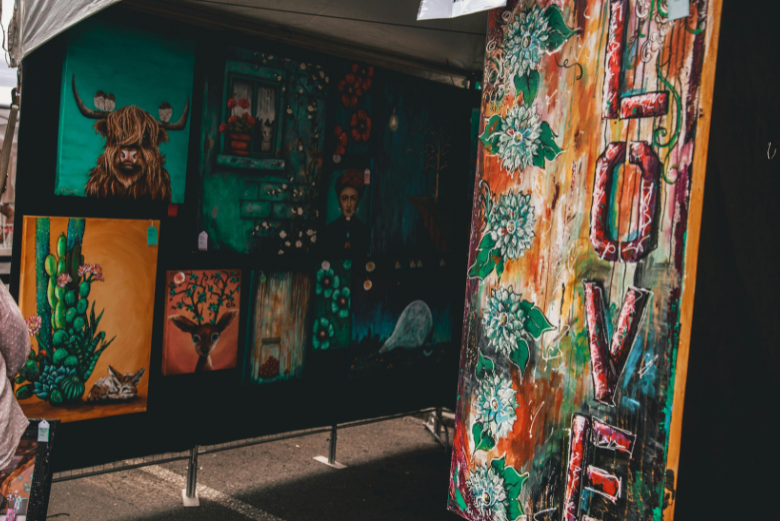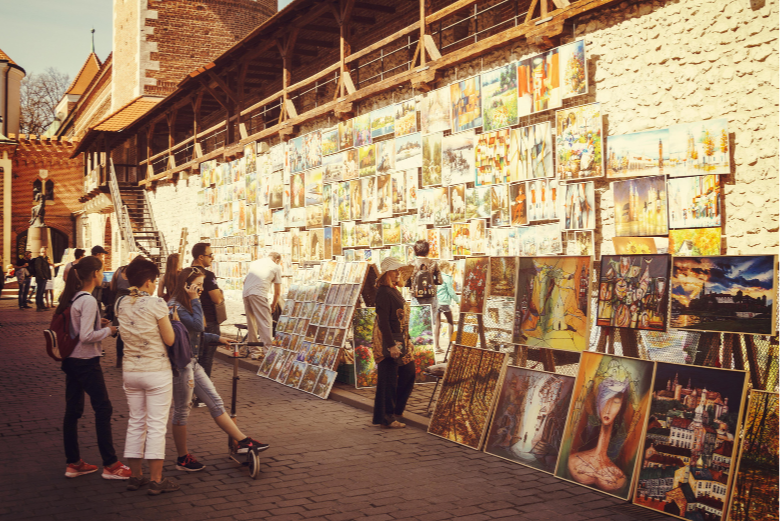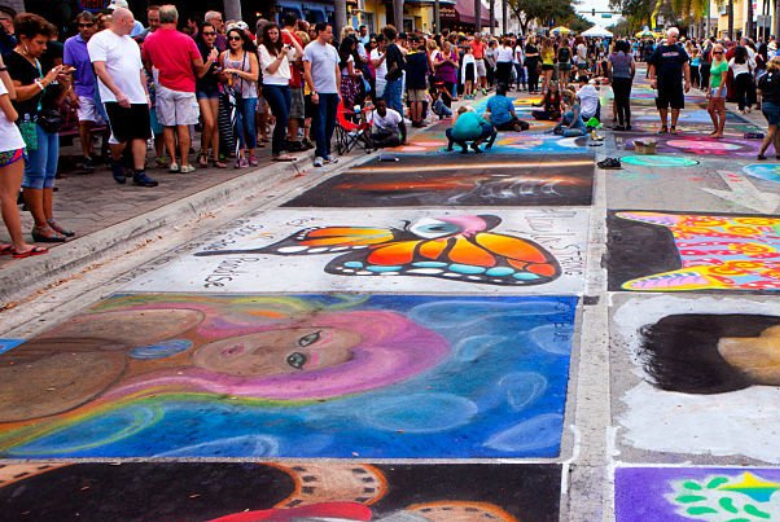Whether art fairs are worth it relies on a number of variables, such as your objectives, hobbies, and point of view. Art fairs are events where galleries, artists, dealers, and collectors come together to showcase and sell artworks. These art fairs typically feature a wide variety of artworks, including paintings, sculptures, photographs, prints, and multimedia installations.

Art fairs serve several purposes:
- Marketplace: Art fairs provide a platform for buying and selling artworks. Galleries and artists use these events to showcase their works to potential buyers, including collectors, art enthusiasts, and curators. Art fairs can be lucrative. Not only for established and emerging artists, but also for galleries seeking to reach new audiences.
- Exposure: Participating in an art fair can provide artists and galleries with exposure to a broader audience. Visitors to art fairs often include collectors, curators, critics, and other art professionals, offering opportunities for artists to gain recognition and expand their networks.
- Networking: Art fairs offer networking opportunities for artists, collectors, dealers, and other participants in the art world. These events often include panel discussions, lectures, and social gatherings where individuals can connect, exchange ideas, and build relationships.
- Cultural Exchange: Art fairs contribute to cultural exchange by bringing together artworks from different regions, cultures, and artistic traditions. Visitors to art fairs have the opportunity to experience a diverse range of artistic styles, techniques, and perspectives.
- Education: Many art fairs include educational components such as panel discussions, artist talks, and guided tours. These activities provide insights into the art world, including trends, practices, and the creative process.

Types Of Art Fairs
- Contemporary Art Fairs: These fairs focus on showcasing contemporary artworks across various mediums, including painting, sculpture, photography, video, and installation. They often feature cutting-edge and experimental works by emerging and established artists alike.
- Fine Art Fairs: Fine art fairs typically emphasize high-quality, traditionally crafted artworks, including paintings, drawings, sculptures, and prints. They may showcase works from different historical periods, styles, and genres, appealing to collectors with a discerning eye for classic art forms.
- Modern Art Fairs: Modern art fairs spotlight artworks from the modernist period, roughly spanning the late 19th century to the mid-20th century. These fairs may feature iconic works by modern masters such as Picasso, Matisse, Mondrian, and Warhol, offering collectors an opportunity to acquire historically significant pieces.
- Regional Art Fairs: Regional art fairs showcase artists and artworks specific to a particular geographic region or cultural context. These fairs celebrate local talent and cultural diversity, fostering connections between artists, collectors, and communities within a given region.
- Specialized Fairs: Some art fairs focus on specific genres, themes, or mediums, catering to niche audiences with specialized interests. Examples include fairs dedicated to photography, prints, works on paper, street art, ceramics, textiles, or digital art.
- International Art Fairs: International art fairs attract participants and attendees from around the globe, showcasing artworks from diverse cultures and regions. These fairs serve as hubs for cross-cultural exchange. It fosters connections between artists, collectors, and art enthusiasts worldwide.
If Art Fairs Are Worth It ?
While art fairs offer numerous benefits to artists, collectors, and enthusiasts, they also come with certain drawbacks and challenges.
Costs: Participating in art fairs can be expensive, with artists facing significant upfront costs such as booth fees, travel expenses, shipping costs for artworks, and promotional materials. For emerging artists or those with limited financial resources, these costs may pose a barrier to entry.
Exclusivity: Some prestigious art fairs have strict selection processes and criteria for participation. This makes it difficult for emerging artists or those outside established art networks to gain entry. This exclusivity can limit opportunities for artists to showcase their work and reach new audiences.
Pressure to Sell: The expectation to generate sales at art fairs can create pressure and stress for artists, detracting from their enjoyment of the event and artistic process. Artists may feel compelled to compromise their artistic vision or create works solely for commercial appeal to meet sales targets.
Logistical Challenges: Managing logistics such as transportation, installation, and staffing at art fairs can be complex and time-consuming. Artists may need to navigate logistical hurdles such as shipping delays, installation issues, or unexpected expenses. This may detract them from their focus on creating and exhibiting artwork.
Variable Returns: While some artists may experience success and profitability at art fairs, others may struggle to recoup their investment or achieve their desired outcomes. The financial returns from participating in art fairs can be unpredictable. It can vary widely depending on factors such as market conditions, the quality of artwork, and individual sales strategies.

Lake Worth, Florida, USA – Annual Lake Worth Florida Street Painting Festival
